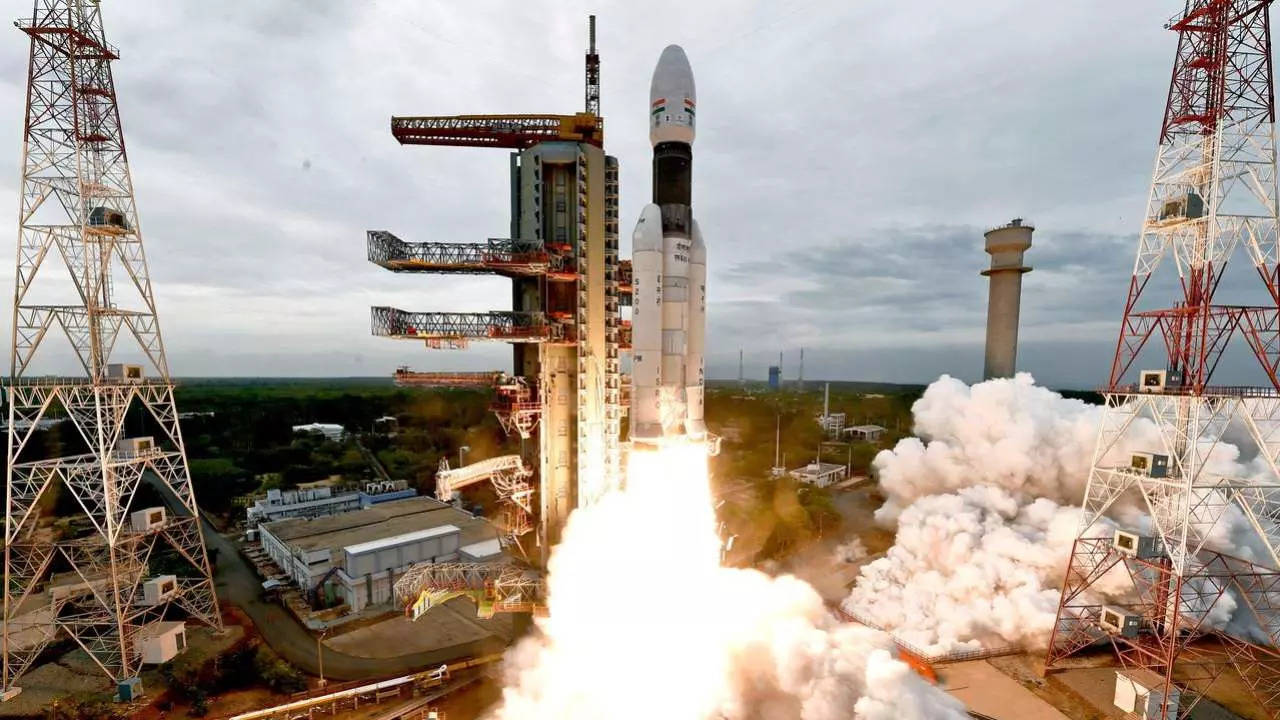BENGALURU: Here’s some good news from Chandrayaan-3 even before Isro attempts to soft-land Vikram (the lander) on August 23: With more than 150kg of fuel left, the propulsion module, which was initially expected to have a life of three-six months, is expected to live on for several years.
Confirming this to TOI, Isro chairman S Somanath said: “It has too much fuel, way beyond our expectations. There’s a lot of fuel left as everything was very nominal on the way to the Moon and there were no contingencies requiring corrections (for which fuel would have been expended). We’re left with almost all the margin, that’s around 150+kg.”
The propulsion module was loaded with 1,696.4 kg of fuel at the time of the launch on July 14, and did all the heavy lifting – five Earth-bound manoeuvres and five lunar-bound manoeuvres before separating from the landing module – between July 15 and August 17.
Each of these manoeuvres would have consumed some fuel. While there’s no break-up of how much fuel each of these operations have consumed, STOI has data from initial calculations – at the end of the first two manoeuvres – done for Chandrayaan-2, which could shed some light, given that the mission profile so far has been similar to 2019.
More time for SHAPE
The Chandrayaan-2 orbiter had carried 1,697kg of propellant, marginally more than the Chandrayaan-3 propulsion module. The orbiter was calculated to have expended more than 657kg of fuel completing the five Earth-bound manoeuvres and the trans-lunar injection. In this phase, the Chandrayaan-3 propulsion module is expected to have used up slightly more fuel.
Post lunar orbit insertion, the Chandrayaan-2 orbiter was calculated to need more than 749kg of fuel at the end of the separation manoeuvre. The Chandrayaan-3 propulsion module is expected to have expended a similar amount of fuel or slightly more in this phase. With 150+kg fuel still left in the module, it could go around the Moon for much longer than the initial design estimate of three-six months.
This means the instrument Spectro-polarimetry of Habitable Planetary Earth (SHAPE) gets more time to study Earth. On whether SHAPE had been turned on for operations, Somanath said that as of late Friday, it was yet to be confirmed.
Final De-boost
Meanwhile, the landing module, comprising Vikram and Pragyan (the rover), would have attempted the second deboost manoeuvre at 2am Sunday. If it succeeds, Vikram would be all set for the power descent for soft-landing. “Sunday’s de-boost would be the last operation unless there is a need for some corrections after the manoeuvre. If the de-boost goes as planned, the next action would be on August 23, when we attempt landing,” Somanath added.
Confirming this to TOI, Isro chairman S Somanath said: “It has too much fuel, way beyond our expectations. There’s a lot of fuel left as everything was very nominal on the way to the Moon and there were no contingencies requiring corrections (for which fuel would have been expended). We’re left with almost all the margin, that’s around 150+kg.”
The propulsion module was loaded with 1,696.4 kg of fuel at the time of the launch on July 14, and did all the heavy lifting – five Earth-bound manoeuvres and five lunar-bound manoeuvres before separating from the landing module – between July 15 and August 17.
Each of these manoeuvres would have consumed some fuel. While there’s no break-up of how much fuel each of these operations have consumed, STOI has data from initial calculations – at the end of the first two manoeuvres – done for Chandrayaan-2, which could shed some light, given that the mission profile so far has been similar to 2019.
More time for SHAPE
The Chandrayaan-2 orbiter had carried 1,697kg of propellant, marginally more than the Chandrayaan-3 propulsion module. The orbiter was calculated to have expended more than 657kg of fuel completing the five Earth-bound manoeuvres and the trans-lunar injection. In this phase, the Chandrayaan-3 propulsion module is expected to have used up slightly more fuel.
Post lunar orbit insertion, the Chandrayaan-2 orbiter was calculated to need more than 749kg of fuel at the end of the separation manoeuvre. The Chandrayaan-3 propulsion module is expected to have expended a similar amount of fuel or slightly more in this phase. With 150+kg fuel still left in the module, it could go around the Moon for much longer than the initial design estimate of three-six months.
This means the instrument Spectro-polarimetry of Habitable Planetary Earth (SHAPE) gets more time to study Earth. On whether SHAPE had been turned on for operations, Somanath said that as of late Friday, it was yet to be confirmed.
Final De-boost
Meanwhile, the landing module, comprising Vikram and Pragyan (the rover), would have attempted the second deboost manoeuvre at 2am Sunday. If it succeeds, Vikram would be all set for the power descent for soft-landing. “Sunday’s de-boost would be the last operation unless there is a need for some corrections after the manoeuvre. If the de-boost goes as planned, the next action would be on August 23, when we attempt landing,” Somanath added.
Denial of responsibility! Todays Chronic is an automatic aggregator of the all world’s media. In each content, the hyperlink to the primary source is specified. All trademarks belong to their rightful owners, all materials to their authors. If you are the owner of the content and do not want us to publish your materials, please contact us by email – todayschronic.com. The content will be deleted within 24 hours.


